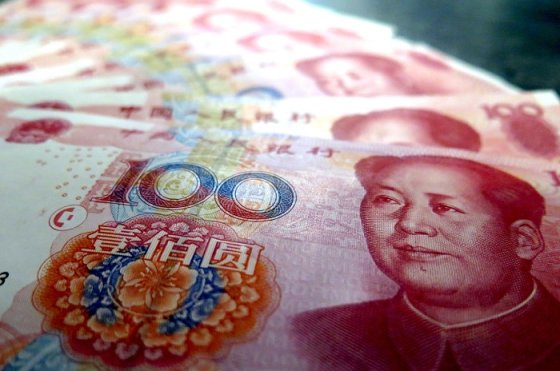The Digital Yuan, or Digital Currency Electronic Payment (DCEP), is an innovative project launched by the People’s Bank of China (PBOC), attracting global attention and speculation. It stands as a major advancement in both the technological and financial realms, being a central bank digital currency (CBDC). The introduction of the Digital Yuan marks a pivotal moment in the evolution of digital currencies, reflecting significant changes in the way financial transactions may be conducted in the future. This article aims to provide an in-depth look at the Digital Yuan, covering its development, underlying technology, distinctive features, the extent of its adoption, and its potential influence on the global economic landscape. If you are a serious Digital Yuan user, you would like to know about resources like this education firm where you can learn about investing from experts right from your comfort.

Table of Contents
The Genesis of the Digital Yuan
The concept of a digital currency in China has roots dating back to the early 2010s when the PBOC initiated research into the development of a digital currency. The primary driving force behind this initiative was to reduce the reliance on physical cash and enhance the efficiency of the payment system. Over the years, the project gained momentum, with the Digital Yuan officially launched in 2020 after years of research and development.
Understanding the Technology Behind Digital Yuan
Blockchain and its Role
One of the key technologies underpinning the Digital Yuan is blockchain. Unlike cryptocurrencies like Bitcoin, which are decentralized, the Digital Yuan relies on a permissioned blockchain, where the PBOC maintains control over the network. This allows for transparency and traceability while ensuring regulatory compliance.
Comparison with Cryptocurrencies
While both the Digital Yuan and cryptocurrencies are digital forms of currency, they differ in fundamental ways. Cryptocurrencies are typically decentralized and not issued or controlled by any central authority. In contrast, the Digital Yuan is issued and regulated by the central bank, making it a centralized digital currency.
Digital Yuan vs. Traditional Digital Payments
The Digital Yuan distinguishes itself from traditional digital payment methods like credit cards and mobile wallets. It offers a direct and peer-to-peer transaction mechanism, eliminating the need for intermediaries such as banks or payment processors. This feature enhances transaction speed and reduces costs.
Features and Capabilities of the Digital Yuan
Wallet Options and Accessibility
Users can access the Digital Yuan through various wallet options, including mobile apps and physical smart cards. These wallets provide a convenient means for individuals and businesses to store and transact in Digital Yuan. Accessibility is a key focus, ensuring that the currency can be used by a wide range of people.
Security Measures and Anti-Counterfeiting Technology
The Digital Yuan incorporates advanced security measures, including encryption and digital signatures, to protect against fraud and counterfeiting. Additionally, it utilizes features like offline transactions, enhancing its usability in areas with limited connectivity.
Smart Contracts and Programmable Money
One of the innovative aspects of the Digital Yuan is its support for smart contracts. These self-executing contracts enable automatic and programmable transactions, potentially revolutionizing various industries, including finance, supply chain management, and more.
Adoption and Impact on the Global Economy
Domestic Adoption and Use Cases within China
The Digital Yuan has been rolled out in various pilot programs across China, including cities like Shenzhen and Beijing. It is already being used for everyday transactions, such as shopping and public transportation fares. This adoption showcases the Chinese government’s commitment to modernizing its payment infrastructure.
Potential Internationalization and Implications
China’s ambition is not limited to domestic use. The internationalization of the Digital Yuan could have significant implications for the global economy. It could potentially challenge the dominance of the US dollar in international trade and finance, as more countries may adopt the Digital Yuan for cross-border transactions.
Challenges and Concerns Surrounding Global Adoption
However, international adoption also comes with challenges. Concerns related to regulatory compliance, cybersecurity, and data privacy must be addressed for the Digital Yuan to gain trust on a global scale. Additionally, geopolitical tensions and regulatory hurdles could impact its expansion beyond China’s borders.
Regulatory and Privacy Considerations
Chinese Government Regulations and Control
The Chinese government maintains strict control over the Digital Yuan, using it as a tool to monitor and regulate financial transactions. This centralized control raises questions about individual privacy and government surveillance.
User Data Privacy and Surveillance Concerns
Users’ financial data and transaction history are closely monitored by the central bank. This has raised concerns about data privacy and the potential for government surveillance, leading to debates about the balance between financial innovation and individual privacy.
International Response and Regulatory Implications
The international community is closely watching the development of the Digital Yuan. Countries and regulatory bodies are considering how to respond to the potential challenges it poses to the existing financial order. Collaborative efforts and discussions on CBDC standards are underway to address these concerns.
Future Prospects and Challenges
Role of the Digital Yuan in Shaping the Future
The Digital Yuan’s role in shaping the future of digital currencies is undeniable. Its success or failure will likely influence the development and adoption of CBDCs worldwide, potentially revolutionizing the way we transact and interact with money.
Competition with Other CBDCs
China is not alone in the CBDC race, as other countries are also developing their digital currencies. The competition between these CBDCs could lead to innovation and new opportunities, but it also raises questions about interoperability and standards.
Potential Challenges and Risks
As the Digital Yuan continues to evolve, it will face challenges such as ensuring security, maintaining user trust, and addressing international concerns. Balancing innovation with regulatory compliance will be crucial for its long-term success.
Conclusion
In conclusion, the Digital Yuan represents a significant milestone in the intersection of technology and finance. Its development and adoption are poised to have far-reaching implications, not only for China but also for the global monetary system. As the world watches its progress, it is essential to consider the opportunities and challenges it presents and how it will shape the future of digital currencies.




